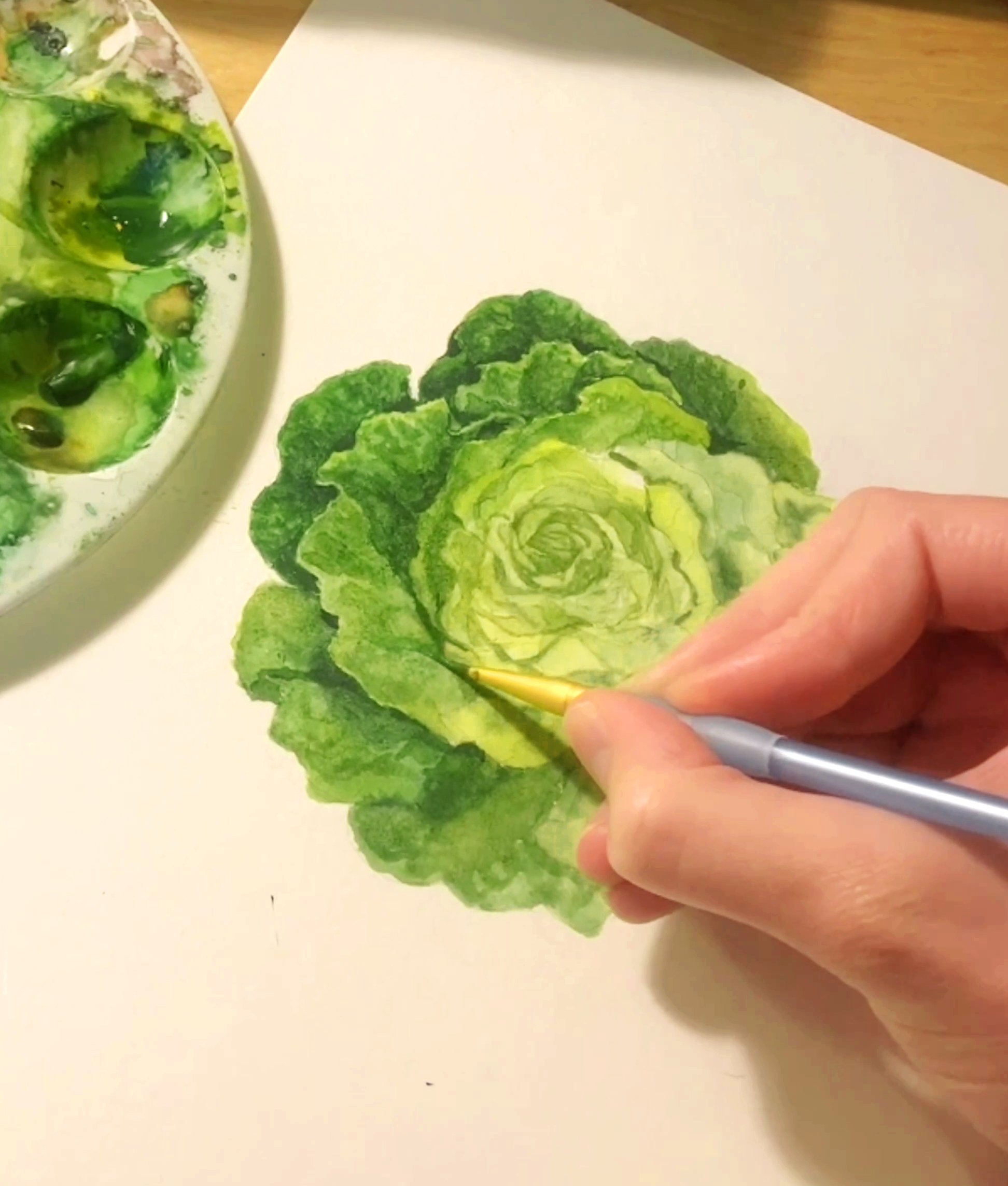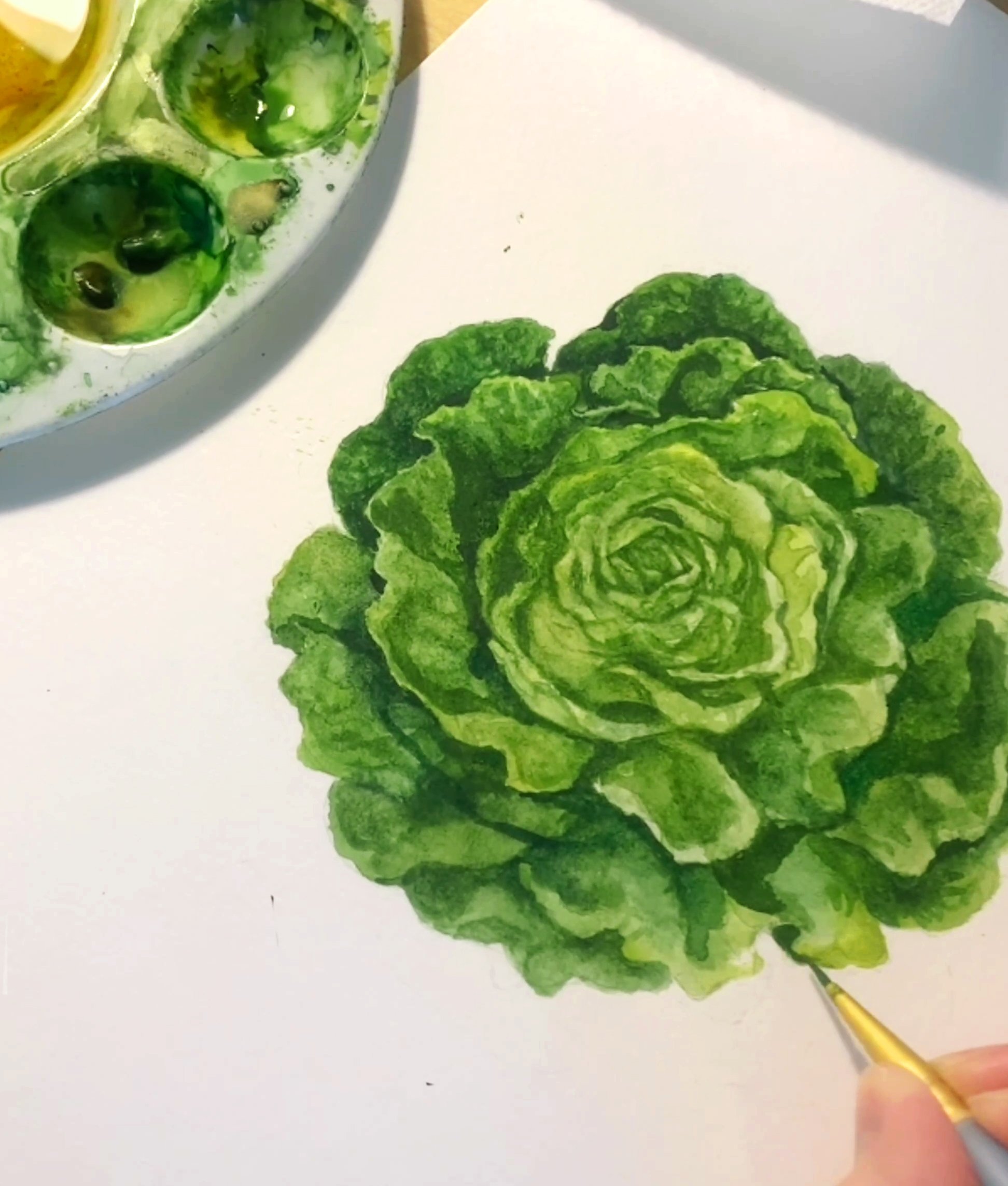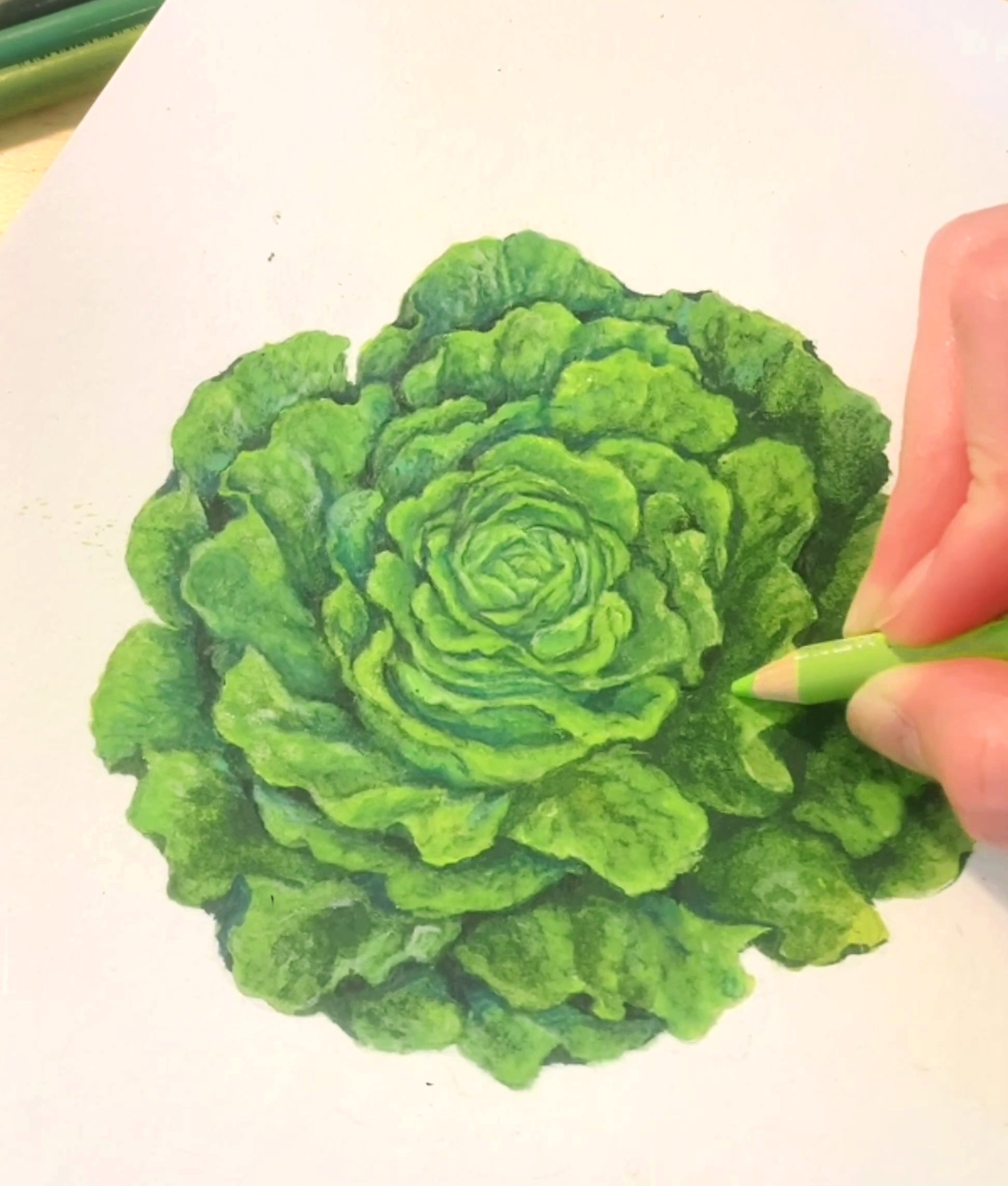Botanical Painting Guide for garden seed packets
Happy Friday, my leafy lettuce heads,
I hope it’s been a great week all around!
I thought I would share a little behind-the-scenes / from-the-desk and share a step-by-step from a recent vegetable illustration and design project for organic garden and seed supplier, Sereniseed.
I’ve had the pleasure of creating over eighty botanical illustrations thus far for Sereniseed’s wide range of produce, herbal, and floral seed varieties. This most recent illustrations was for their upcoming Buttercrunch lettuce seed packet.
Let’s dive into the process.
As with all naturalistic/realistic illustrations, and especially botanical illustration, it’s important to research the subject and have references. In-person subject references are ideal to get all of the up-close details, but royalty-free stock images work wonderfully as well.
Once the reference image(s) have been gathered, we then need to determine our art materials. For the series of horticulture illustrations for Sereniseed, I use a combination of watercolor painting, and detail drawing with colored pencils.
Here is a rundown of the art materials I used:
Once the art materials are gathered, the fun begins! I start with a rough pencil sketch of the subject, in this cased the many crinkled, layered leaves of the Buttercrunch lettuce head.
I then start with the watercolor painting, first laying down a light wash of green, and then repeating and building the layers until a rich, opaque color has emerged This building and layering of the watercolor pigment helps create a depth and dimensionality to the painting that contributes to that realistic, life-like quality.
Once the watercolor layers are complete (and fully dry!), I begin penciling in details. Using a richly pigmented and soft, waxy colored pencils like Prismacolors allows the color to either sit clearly and distinctly on top of the watercolor, or, with a bit more applied pressure in the hand, blend the pencil pigment with the watercolors for a blurred flow of color.
The buildability of both artistic mediums allows for details to continue to be added and layered, with cool tones filling out the shadows and warm, bright tones for the highlights.
It’s up to the artist to decide when to rest the pencil or brush and feel content with the illustration and level of detail. This is always trickier with naturalistic botanical illustrations, where it’s very easy to get lost in adding every small indentation or vein within the plant leaves.
But when the paper whispers, you know.
Finally, the completed illsutration is ready to be scanned, cleaned up digitally of any smudges or paint droplets, and be placed in its final home within the garden seed packet.








